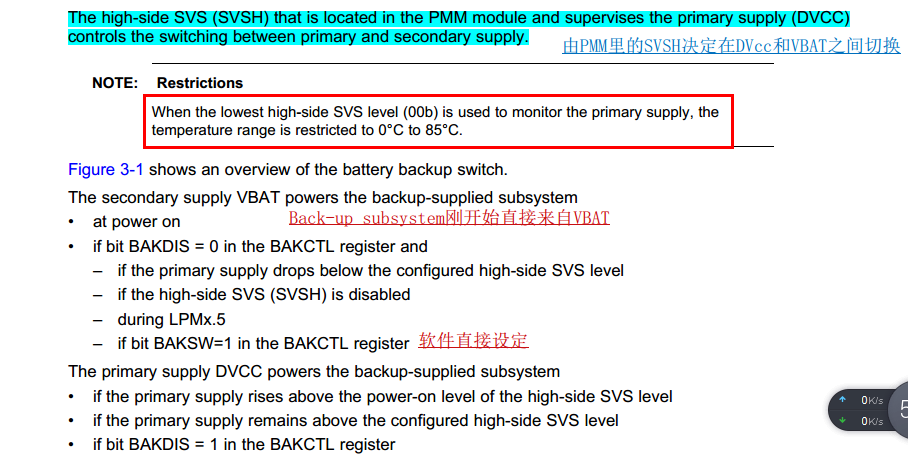Other Parts Discussed in Thread: MSP-EXP430FR5994
Hi everyone,
In LPM3 mode, ACLK should still work. But the following code in MSP430F6459 tells it will shut down ACLK( source from XT1=32KHz).
Besides, if my PCBA connet with MSP-Fet430UIF, ACLK is fine(LPM3).
Need your help on this.
Thanks.
Best Regards,
SeaFesse
#include <msp430f6459.h>
void main(void)
{
WDTCTL = WDTPW | WDTHOLD; // Stop WDT
P1DIR |= BIT0;
P1SEL |= BIT0; //P1.0----ACLK output
PJDIR |= BIT2;
// PJSEL &=~BIT2;
while(BAKCTL & LOCKBAK) // Unlock XT1 pins for operation
BAKCTL &= ~(LOCKBAK);
// Setup UCS
UCSCTL3 |= SELREF__XT1CLK; // Set DCO FLL reference = XT1
UCSCTL4 |= SELA__XT1CLK; // Set ACLK = XT1
__bis_SR_register(SCG0); // Disable the FLL control loop
UCSCTL0 = 0x0000; // Set lowest possible DCOx, MODx
UCSCTL1 = DCORSEL_5; // Select DCO range 16MHz operation
UCSCTL2 = FLLD_1 | 243; // Set DCO Multiplier for 8MHz
// (N + 1) * FLLRef = Fdco
// (243 + 1) * 32768 = 8MHz
// Set FLL Div = fDCOCLK/2
__bic_SR_register(SCG0); // Enable the FLL control loop
// Worst-case settling time for the DCO when the DCO range bits have been
// changed is n x 32 x 32 x f_MCLK / f_FLL_reference. See UCS chapter in 5xx
// UG for optimization.
// 32 x 32 x 8 MHz / 32,768 Hz = 250000 = MCLK cycles for DCO to settle
__delay_cycles(250000);
// Loop until XT1, XT2 & DCO fault flag is cleared
do
{
UCSCTL7 &= ~(XT2OFFG | XT1LFOFFG | DCOFFG);
// Clear XT2,XT1,DCO fault flags
SFRIFG1 &= ~OFIFG; // Clear fault flags
} while (SFRIFG1 & OFIFG); // Test oscillator fault flag
while(1)
{
__bis_SR_register(LPM3_bits | GIE); // Enter LPM0, interrupts enabled
__no_operation(); // For debugger
}
}


